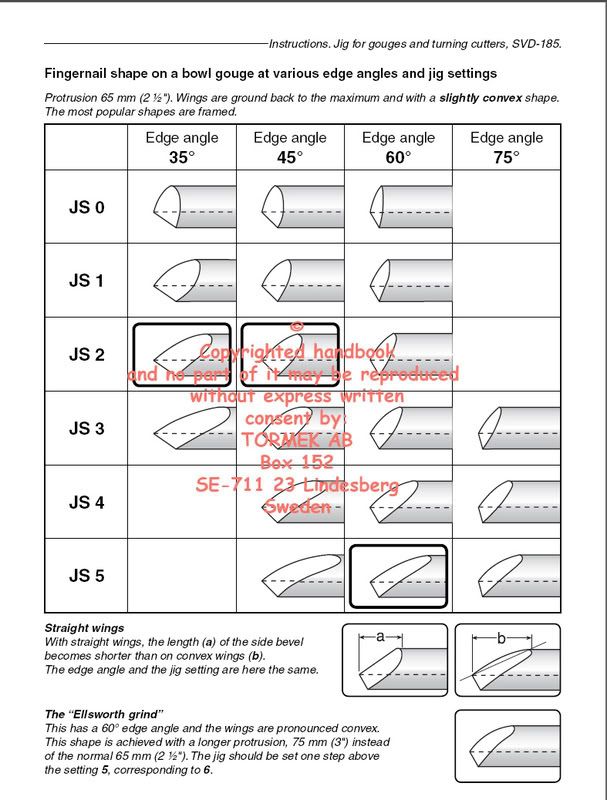Ok, so I have a wolverine base, and the vari-grinder accessory. Not the vari-grinder 2.
I want to put a 60 degree bevel on my bowl gouge.
So, I insert my gouge such that it sticks out of the vari-grind by 1.75 inches. Next I insert the stem, into the wolverine pocket...and away I go.
Questions:
How far out do I pull the wolverine base? How far away from the wheel am I to have the pocket? Seems like that distance will also determine the degree bevel I grind.
That stem on the vari-grind adjusts up and down, to set my bevel degree. How do I know which knotch to set it in, to achieve 60 degrees? There's no markings on the vari-grind.




 Reply With Quote
Reply With Quote











